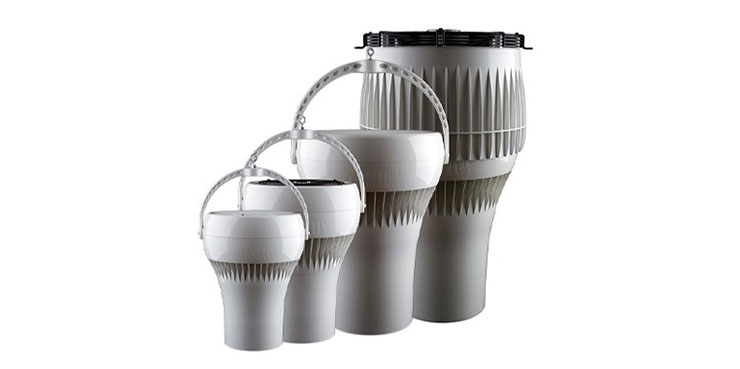Looking at the world around us, technology is being utilized to improve just about everything. From implementing AI in the consumer shopping experience to data collection to grab-and-go shops, it is quite literally impacting everything that we do.
For decades, technology has been improving warehouse management and driving innovation in the supply chain. In the 1970s, with the development of computers and mainframes, came the first generation of Warehouse Management Systems, or WMS as it is commonly known. According to Hopstack, in 1975, J.C. Penney developed the first real-time Warehouse Management System, which ultimately changed the world of the supply chain.
Soon after, many companies followed suit in developing their own WMS. Warehouse innovation over the years has driven efficiency and profits, all while easing employee workloads. With the right creativity and technology, warehouses can continue to thrive.
In this article, Beverage Wholesaler highlights some strategies that can help drive your wholesale business forward in today’s ever-changing landscape of warehouse innovation.
Embracing Automation

Ion Rotaru, a warehouse management specialist from WarehouseWiz, advises wholesalers that if they want to become more efficient and reduce costs in the long-run, they need to embrace automation, WMS and analytics.
“Automation is important because warehouse labor is becoming harder and harder to find and maintain,” Rotaru says. “Not only that, but we’ve found by talking to warehouse managers and by looking at surveys that labor is the biggest expense in a majority of warehouses.”
Rotaru notes that it is estimated that robots will replace 40% of warehouse jobs by 2030. Automation helps to reduce error rates, improve safety and mitigate the labor problem that every warehouse manager is facing.
Agreeing with Rotaru is Diana Zheng, Head of Marketing at Canadian shipping company Stallion Express. “Warehouse innovation has the potential to revolutionize the way wholesale companies operate,” she says. “If you’re looking for efficiency and scalability, embracing automated inventory management (AIM) and AI-powered predictive analytics (Predictive Analytics) can dramatically improve operational performance.”
After implementing innovative warehouse automation solutions, Zheng noticed a dramatic 30% reduction in order processing times at Stallion Express.

Lower Energy Costs with Destratification
Warehousing is all about storing and moving products. If the indoor temperature is not consistent throughout the entire building, it can negatively impact the merchandise.

“Ever ridden a lift from the floor to the ceiling in a warehouse and noticed how much warmer it is at the top? This air stratification, or temperature gradient, can be an issue for wholesalers who store temperature sensitive products such as pharmaceutical drugs, chocolate, or beverages,” explains Christian Avedon, Director of Sales and Marketing at Airius.
Air destratification is an innovative, effective strategy for HVAC cost and energy savings for warehouses. Destratification fans circulate the air more efficiently and help to reduce the amount of energy that is needed to heat or cool a building, according to Avedon. These fans can even regulate humidity, which is critical for storing beverages.
All in all, destratification fans can save money on energy bills, help protect the environment and maintain the integrity of products.
“Typically, HVAC systems are overdriven to combat air stratification, which requires excess cooling or heating to maintain setpoint temperatures,” explains Avedon. “From an energy savings perspective, clients can see up to 35% or more reduction in their energy bills. With a ductwork material reduction strategy and using destratification fans for air distribution, the material cost savings can be incredibly significant.”
The Role of IoT in Warehouse Management
Looking for a real game-changer? Zheng advises wholesalers to consider adding robotics and Internet of Things (IoT) devices to their warehouse. “Not only do these technologies automate the fulfillment process, but they also reduce mistakes, resulting in lower operating costs over time,” she says.
IoT sensors can be used to track the location and condition of inventory in real time, allowing warehouse managers to quickly and accurately assess the availability of items, explains Zheng. This can not only help to reduce the time and labor required for inventory management tasks, but it also results in customer satisfaction and loyalty.
Shiphero states that IoT works in warehousing by placing sensors on shelves to track the inventory levels of certain items. This information is then be sent to a central system, which warehouse managers can track.
Additionally, RFID tags can be attached to pallets or containers to automatically track their location within the warehouse. All of this can greatly improve the efficiency of operations.

Invest in Sustainable Solutions
Companies across all sectors have been making changes to their business models in recent years to be more eco-friendly. Beverage alcohol wholesalers in particular have become more aware of the need to embrace additional sustainable business practices.
An internal survey conducted by Wine & Spirits Wholesalers of America (WSWA) found that over 80% of respondents think adopting more sustainable practices into the industry is important. Additionally, more than 65% of those surveyed had already installed electric vehicle chargers at their facilities, showcasing a firm commitment to eco-conscious transportation solutions.
By implementing eco-friendly practices such as energy-efficient lighting, recycling programs and green packaging solutions, warehouses can not only significantly reduce their environmental impact, but can also improve operational efficiency and reduce costs.
As technology continues to evolve and improve warehouse flow, the best thing you can do is embrace it. And always be sure to work with people who know what they’re doing.
“As an advocate for innovative solutions, please work with warehouse professionals who are experts in these innovations,” Zheng advises. “Collaboration breeds a culture of continual improvement that will keep your wholesale company at the cutting edge of the industry.”









